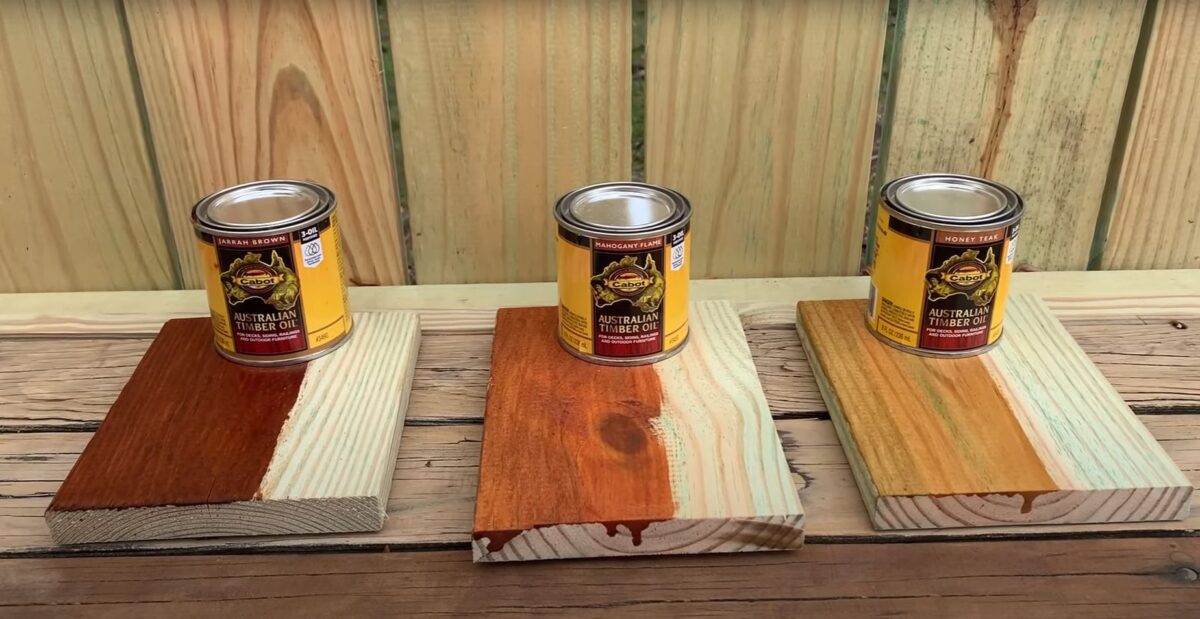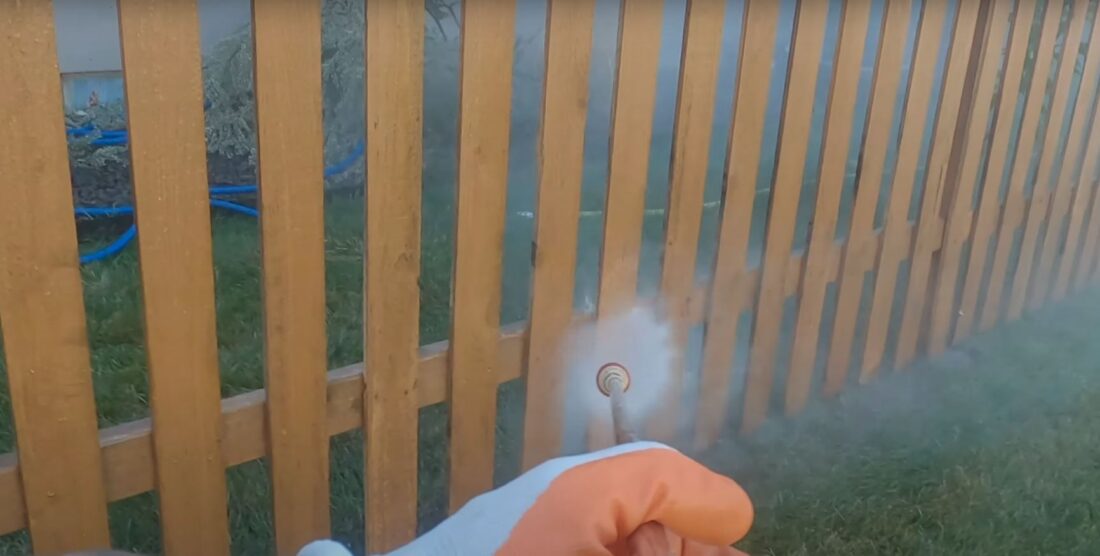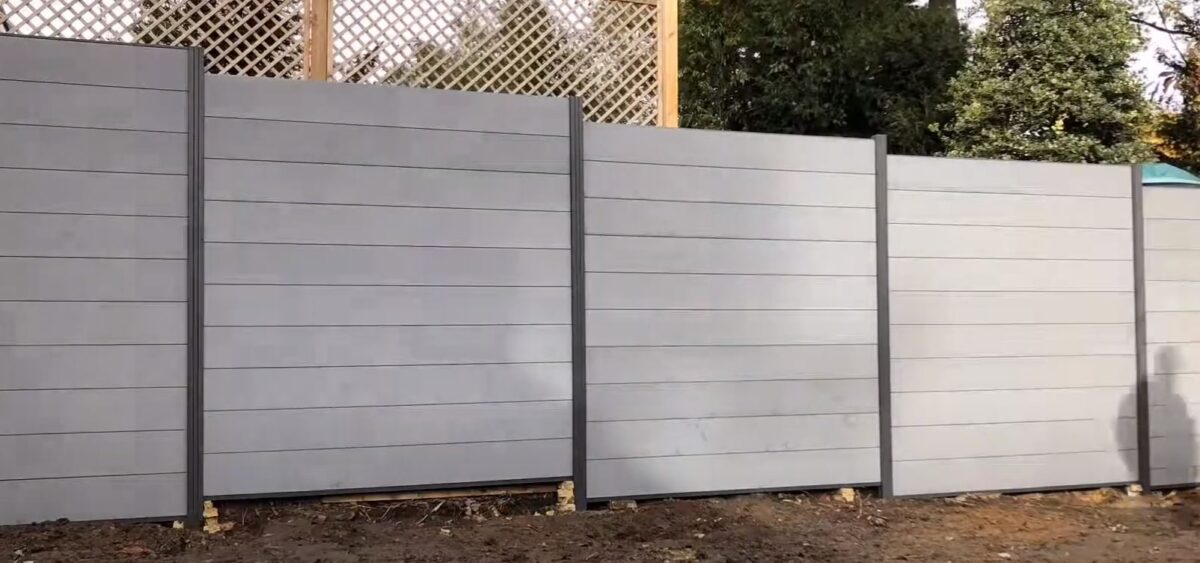What if it Rains After Staining a Fence?
Effects of Rain on Freshly Stained Fences
Rain can significantly impact the effectiveness of freshly applied stain on a fence. The stain needs time to penetrate and bond with the wood, and rain can disrupt this process.
- Wash Away Stain: Rain can wash away fresh stain before it has time to set, leading to uneven colouring and wasted product.
- Water Spots: Rain can cause water spots and streaks, creating an uneven appearance.
- Extended Drying Time: Moisture can extend the drying time of the stain, delaying the completion of the project.
Types of Stains and Their Vulnerability to Rain
Different types of stains have varying levels of resistance to rain and moisture. Understanding the differences can help you choose the best option for your project. Consult with our fence installation contractors today if you are unsure.
Oil-Based Stains
Oil-based stains penetrate deeply into the wood, providing long-lasting protection and rich colour.
-
- Vulnerability: Highly susceptible to rain in the first 24 hours after application.
- Advantages: Offers excellent protection against moisture once fully cured.
- Drying Time: Typically requires 24-48 hours to dry properly.
Water-Based Stains
Water-based stains dry faster and are easier to clean up than oil-based options.
-
- Vulnerability: Less susceptible to rain but still requires a few hours to set.
- Advantages: Eco-friendly, less odour, and quick drying.
- Drying Time: Generally dries within 2-4 hours, but full curing takes up to 24 hours.
Weather Conditions and Timing
Planning your staining project around the weather forecast is crucial to avoid issues caused by rain.
-
- Weather Forecast: Check the forecast for at least 48 hours of dry weather before and after staining.
- Temperature and Humidity: Ideal temperatures for staining are between 10°C and 30°C. High humidity can extend drying times.
Health and Safety Considerations
Staining a fence involves handling chemicals that require proper safety precautions.
-
- Protective Gear: Wear gloves, safety glasses, and a mask to protect against fumes and skin contact.
- Ventilation: Ensure good ventilation if working in an enclosed area to avoid inhaling harmful vapours.
- Storage: Store stain products in a cool, dry place away from direct sunlight and heat sources.
Fence Types and Staining Considerations
Different fence materials interact with stains in unique ways, affecting both application and durability.
Wood Fences
Wood is the most common material for fences and is highly receptive to staining.
-
- Preparation: Clean and sand the wood surface before applying the stain to ensure proper absorption.
- Maintenance: Re-stain every 2-3 years to maintain colour and protection.
Composite Fences
Composite fences are made from a mix of wood fibres and plastic, making them less receptive to traditional stains.
-
- Preparation: Clean thoroughly but avoid sanding as it can damage the surface.
- Stain Type: Use stains specifically designed for composite materials.
Vinyl Fences
Vinyl fences are typically not stained, as they are designed to retain their colour and require minimal maintenance.
-
- Maintenance: Regular cleaning with soap and water is usually sufficient.
- Painting: If colour change is desired, use paint suitable for vinyl surfaces rather than stain.
Comparison of Different Fence Stains
| Aspect | Oil-Based Stains | Water-Based Stains |
| Drying Time | 24-48 hours | 2-4 hours for initial dry, up to 24 hours for full cure |
| Vulnerability to Rain | High in the first 24 hours | Moderate in the first few hours |
| Durability | Long-lasting, deep penetration | Quick drying, surface-level protection |
| Environmental Impact | Higher VOC content, more odour | Lower VOC content, eco-friendly |
| Ease of Application | Requires careful handling, longer drying time | Easier clean-up, faster application |
| Maintenance | Requires less frequent reapplication | May need more frequent touch-ups |
| Protection | Excellent moisture and UV protection | Good moisture and UV protection |
| Appearance | Rich, natural finish | Vibrant, varied colour options |
| Clean-up | Requires solvents (e.g., mineral spirits) | Clean-up with soap and water |
Fence Material Considerations
| Fence Type | Best Stain Type | Notes |
| Wood Fences | Both Oil-Based and Water-Based | Ensure proper preparation for best results |
| Composite Fences | Specialized Composite Stains | Avoid sanding, clean thoroughly before application |
| Vinyl Fences | Not typically stained, use paint if colour change is desired | Regular cleaning with soap and water is usually sufficient |
Post-Rain Actions
If it does rain after you’ve stained your fence, there are steps you can take to mitigate the damage.
- Assess the Damage: Wait until the fence is dry to assess how the rain affected the stain.
- Reapply Stain: In areas where the stain washed away or became uneven, reapply once the wood is completely dry.
- Sand and Clean: Lightly sand any areas with water spots or streaks, then clean the surface before re-staining.
Preventive Measures
Taking proactive steps can help ensure the success of your staining project even with unpredictable weather.
- Use Tarps or Covers: Protect your freshly stained fence with tarps or plastic sheeting if rain is unexpected.
- Plan Ahead: Stain in smaller sections that can be easily covered if needed.
- Monitor Weather: Stay updated with weather forecasts during your project to make quick adjustments as necessary.
Engaging Quality Fencing Auckland ensures expert advice and professional service, helping you navigate the complexities of staining your fence and ensuring it withstands Auckland’s unique weather conditions. This local fence builder expertise is particularly beneficial in areas like South Auckland and Beach Haven, where soil types and coastal exposure can present specific challenges for fence maintenance and durability.
Other Locations:



